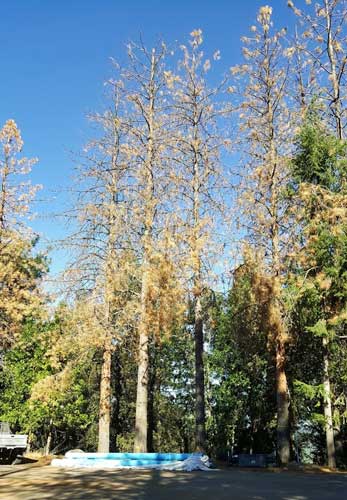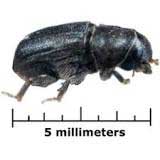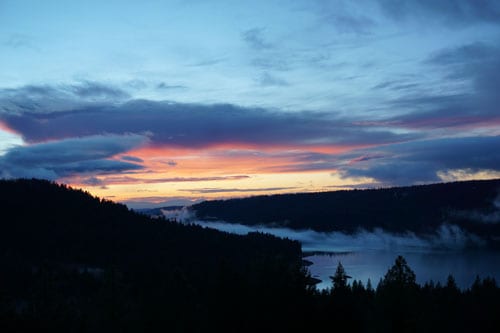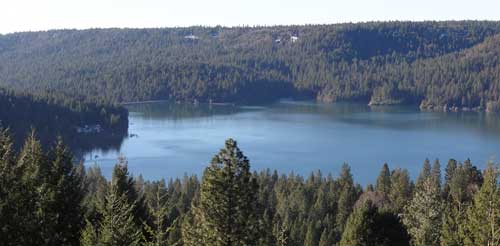
I’ve noticed with great alarm the number of trees dying from the drought and beetle infestation here in Nevada County It seems like every day, while driving around the county, I see another group of pine trees dying or dead.
There is a small about 1,000 foot long cul-de-sac near my house. I counted 27 pine trees dead or dying in that cul-de-sac. According to various sources we have 66 million trees that are dead from the drought and the number is growing. Pine beetles of different varieties are to blame and the principal species which are responsible are: mountain pine beetle, fir engraver beetle, western pine beetle, Jeffrey pine beetle and pine engraver beetles.

The following is an excerpt from the National Forest Service
The U.S. Forest Service today announced that it has identified an additional 26 million trees dead in California since October 2015. These trees are located in six counties across 760,000 acres in the southern Sierra Nevada region of the state, and are in addition to the 40 million trees that died statewide from 2010 to October 2015, bringing the total to at least 66 million dead trees. Four consecutive years of severe drought in California, a dramatic rise in bark beetle infestation and warmer temperatures are leading to historic levels of tree die-off.
“Tree dies-offs of this magnitude are unprecedented and increase the risk of catastrophic wildfires that puts property and lives at risk,” said Agriculture Secretary Tom Vilsack. “While the fire risk is currently the most extreme in California because of the tree mortality, forests across the country are at risk of wildfire and urgently need restoration requiring a massive effort to remove this tinder and improve their health. Unfortunately, unless Congress acts now to address how we pay for firefighting, the Forest Service will not have the resources necessary to address the forest die-off and restore our forests. Forcing the Forest Service to pay for massive wildfire disasters out of its pre-existing fixed budget instead of from an emergency fund like all other natural disasters means there is not enough money left to do the very work that would help restore these high mortality areas. We must fund wildfire suppression like other natural disasters in the country.”
Between 2010 and late 2015, Forest Service aerial detection surveys found that 40 million trees died across California – with nearly three quarters of that total succumbing to drought and insect mortality from September 2014 to October 2015 alone. The survey identified approximately 26 million additional dead trees since the last inventory in October, 2015. The areas surveyed in May covered six southern Sierra counties including Fresno, Kern, Madera, Mariposa, Tuolumne and Tulare. Photos and video of the May survey are available on the Forest Service multimedia webpage.
Help keep this website going
Contact us: O’Dell Realty
530-263-1091
Error: Contact form not found.


